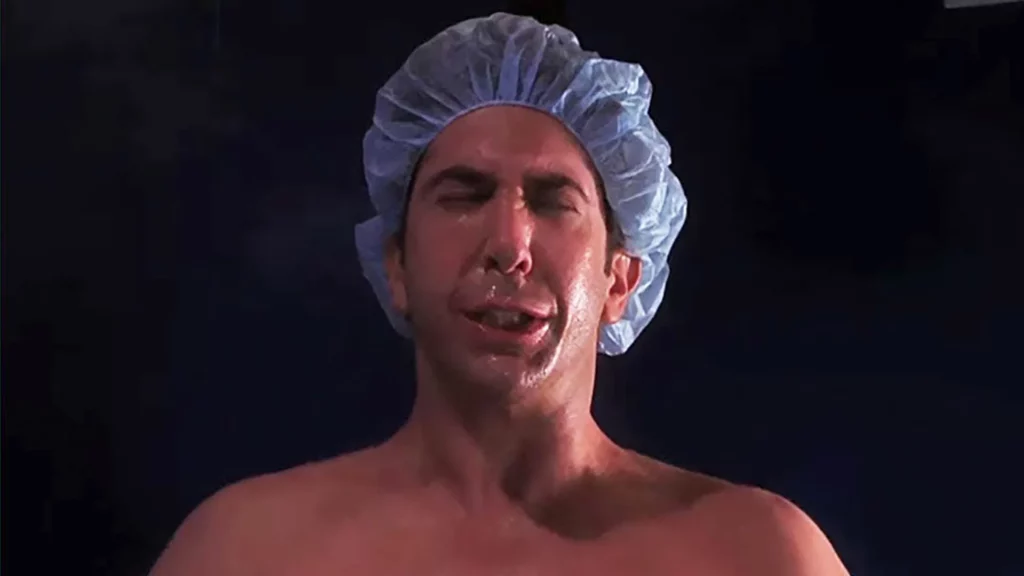The unique aroma of fake tan, often compared to the scent of biscuits or cookies, is primarily attributed to dihydroxyacetone (DHA), a key chemical found in most self-tanning products. DHA interacts with the amino acids in the outermost layer of the skin, causing a temporary darkening effect.
As DHA reacts with the skin, it generates volatile compounds, particularly certain aldehydes, which contribute to the characteristic smell. These aldehydes bear a resemblance to the fragrance of baked goods like biscuits or cookies, giving rise to the familiar fake tan scent.
In an effort to improve the overall fragrance, manufacturers have made strides by incorporating fragrances and masking agents into fake tan products to reduce the biscuit-like odour. Despite their efforts, a lingering smell may still persist due to the inherent nature of the chemical reaction involved.
Why Does Fake Tan Smell Like Biscuits?

The primary ingredient responsible for giving you that gorgeous bronzed glow in fake tanning products is Dihydroxyacetone (DHA).
Dihydroxyacetone (DHA) The Culprit Behind the Sweet Scent
DHA is a colourless sugar derived from plant sources like sugar beets or sugar cane. When applied to the skin, DHA interacts with the amino acids in the top layer of the epidermis, causing a chemical reaction that produces a tan-like pigment.
The Maillard Reaction – A Delicious Transformation
The pleasant biscuit smell emanating from your freshly tanned skin is a result of the Maillard reaction. The Maillard reaction is a chemical reaction between amino acids and reducing sugars in the presence of heat.
In the context of sunless tanning, the DHA in the tanning product acts as the reducing sugar, while the amino acids in your skin serve as the reactants.
When DHA comes into contact with your skin, this reaction occurs. It leads to the production of melanoidins, which are responsible for the brownish colour of the tan. Interestingly, the same reaction is responsible for the browning of baked goods, such as biscuits or cookies, when they are heated in the oven.
Hence, the sweet scent produced during sunless tanning mirrors the delicious aroma of freshly baked treats.
Evolving Formulas and Reduced Odour
While the association between fake tan and biscuit scent has been long-established, advancements in tanning product formulations have significantly reduced the intensity of this odour.
Tanning product manufacturers have invested heavily in research to develop improved formulas that minimise the “fake tan smell.”
Today, you can find various sunless tanning products infused with pleasant fragrances, such as tropical fruits or floral scents, which help mask the biscuit-like smell.
Additionally, some brands have introduced odour-neutralising technologies that mitigate the production of the biscuit odour during the tanning process.
The Evolution of Sunless Tanning: From Unpleasant Odour to Luxurious Experience
In the early days of sunless tanning, the biscuit smell was more pronounced and often seen as an unavoidable trade-off for a golden tan without exposure to harmful UV rays.
Tanners were willing to endure the scent for the sake of achieving a sun-kissed complexion. However, as the beauty industry evolved, consumer demands for a more luxurious tanning experience increased.
In addition,cosmetic companies responded by investing in research and development to tackle the smell issue. They recognized that the odour was a significant deterrent for some customers and set out to create innovative solutions.
The development of new tanning formulas, fragrance technologies, and skin-nourishing ingredients revolutionised the sunless tanning landscape.
Fragrance Technology and Perfumed Elegance
Fragrance technology played a vital role in enhancing the tanning experience. Manufacturers introduced cutting-edge scent-masking technologies to combat the biscuit odour effectively.
By incorporating delightful fragrance notes, such as coconut, vanilla, or floral scents, they transformed the unpleasant smell into an aromatic indulgence.
Organic and Natural Formulations
With the growing emphasis on natural and organic beauty products, the sunless tanning industry adapted accordingly.
Many brands switched to organic DHA derived from sustainable sources, further improving the appeal of their products.
These formulations not only deliver an eco-friendly tanning solution but also tend to have a milder scent compared to traditional formulas.
Innovative Application Methods
In addition to improving the formulation of tanning products, innovative application methods have also contributed to reducing the biscuit smell.
Brands introduced self-tanning sprays, mousses, and lotions that are easier to apply evenly, thus minimising the risk of excessive product buildup and potential odours.
The Psychology of Scent
Scent is deeply intertwined with emotions and memories. Fragrances can evoke feelings of relaxation, happiness, and even nostalgia.
Cosmetic companies harnessed the power of scent psychology to enhance the tanning experience further. By associating the product with positive and pleasant fragrances. They create a more enjoyable and desirable association for customers.
The Future of Sunless Tanning
As technology and research continue to advance, the future of sunless tanning looks even brighter. It is likely that sunless tanning products will continue to improve, offering even more realistic and long-lasting tans without the unwanted odour.
Moreover, the connection between fake tan and the sweet smell of biscuits can be traced back to the chemical reaction between DHA and amino acids, known as the Maillard reaction.
The beauty industry’s dedication to customer satisfaction has led to significant improvements in sunless tanning formulations, resulting in reduced odour and a more pleasant experience for users.
Historical Background of Self-Tanning Products
Self-tanning is not a new concept; it dates back centuries. Early methods involved the use of natural substances like walnut and plant extracts to achieve a tan-like appearance.
However, the results were often inconsistent and short-lived. With advancements in cosmetic science, the 20th century witnessed the emergence of self-tanning products as we know them today.
These early formulations were notorious for their strong and unpleasant odours, which became a significant challenge for the industry.
The Science Behind Self-Tanning
Modern self-tanning products owe their effectiveness to a key ingredient called DHA (Dihydroxyacetone). DHA is a colourless sugar derived from natural sources like sugar beets and sugar cane.
When applied to the skin, DHA interacts with the amino acids in the dead cells of the stratum corneum, the outermost layer of the epidermis. This triggers a chemical reaction known as the Maillard reaction. It leads to the formation of melanoidins – the compounds responsible for the tanned appearance.
Investigating the Biscuit-Like Smell
The observation of the biscuit smell in fake tan products has sparked curiosity among consumers and researchers alike. Studies have identified specific chemical compounds that contribute to this distinctive fragrance.
These compounds are formed during the Maillard reaction when DHA interacts with amino acids such as lysine and arginine. As a result, pyrazines, ketones, and aldehydes are generated, imparting the characteristic biscuit scent.
The Role of Maillard Reaction
The Maillard reaction, widely known for its role in browning and flavour development during cooking, is also the driving force behind the biscuit smell in fake tan products.
This chemical reaction occurs when reducing sugars like DHA react with amino acids under specific conditions of temperature and pH.
Understanding this process sheds light on why the biscuit smell is an inherent part of self-tanning products.
Impact of Formulation on Odour

The formulation of self-tanning products plays a crucial role in determining the intensity of the biscuit-like smell. Manufacturers have made efforts to reduce the odour by incorporating various fragrance ingredients.
However, this practice may not appeal to all users, as some prefer a more natural and subtle scent. We will explore the challenges faced by formulators in striking a balance between effective tanning and a pleasant aroma.
Consumer Perception and Preferences
The biscuit smell has become a defining characteristic of fake tan products.It evokes mixed responses from consumers. While some individuals embrace the scent, associating it with a positive tanning experience, others find it off-putting.
Surveys and studies have been conducted to gauge consumer attitudes towards the odour, revealing interesting insights into preferences and purchase decisions.
Health and Safety Considerations
In recent times, there have been concerns regarding the safety of chemical compounds responsible for the biscuit smell in fake tan products. While DHA is considered safe for topical use, there is ongoing research to determine the safety of specific odorants.
We will explore the current regulatory guidelines and potential health implications, providing insights into responsible use and precautions.
Future Innovations and Research Directions
The beauty industry continues to evolve. It is driven by consumer demands for better products and experiences. Manufacturers are actively seeking ways to improve the overall user experience by addressing the odour issue in self-tanning products.
FAQs
Why does tan smell like biscuits?
The smell of tan resembling biscuits is due to the chemical reaction of Dihydroxyacetone (DHA) with the skin’s amino acids. This reaction produces compounds that emit a sweet, biscuit-like odour.
What does fake tan smell like?
Fake tan typically smells like a sweet, biscuit-like scent due to the presence of Dihydroxyacetone (DHA) in the product, which reacts with the skin during application.
What fake tan doesn’t smell like biscuits?
Some fake tan products are formulated with advanced technologies and fragrance additives to mask the biscuit-like smell of DHA, providing a more pleasant and subtle scent during and after application.
How do you get the smell out of fake tan biscuits?
To minimise the biscuit-like smell of fake tan, you can try using tan products that have reduced DHA content or contain fragrance additives.
Additionally, ensuring proper ventilation during application and using scented lotions or body washes can help mask the smell.
Why do I keep smelling biscuits?
If you keep smelling biscuits, it might be due to using a tan product that contains Dihydroxyacetone (DHA).
In addition, it produces a biscuit-like smell during and after application. Consider switching to a different tan product with reduced odour or using scented body products to reduce the smell.
What is the least smelling fake tan?
The least-smelling fake tan products are usually those that are DHA-free or have low DHA content. Additionally, some brands offer specially formulated tanning products with fragrance additives to minimise the typical biscuit-like smell associated with fake tans.
Conclusion
The biscuit-like smell of fake tan products may have puzzled us for years. But with a deeper understanding of the chemistry and the Maillard reaction, we can now appreciate the science behind this aromatic phenomenon.
As self-tanning formulations continue to advance, the industry’s focus on user preferences, safety, and innovation promises a brighter and better-smelling future.
Embrace the science behind your golden glow and enjoy your self-tanning journey with a newfound appreciation for the delightful biscuit scent.

